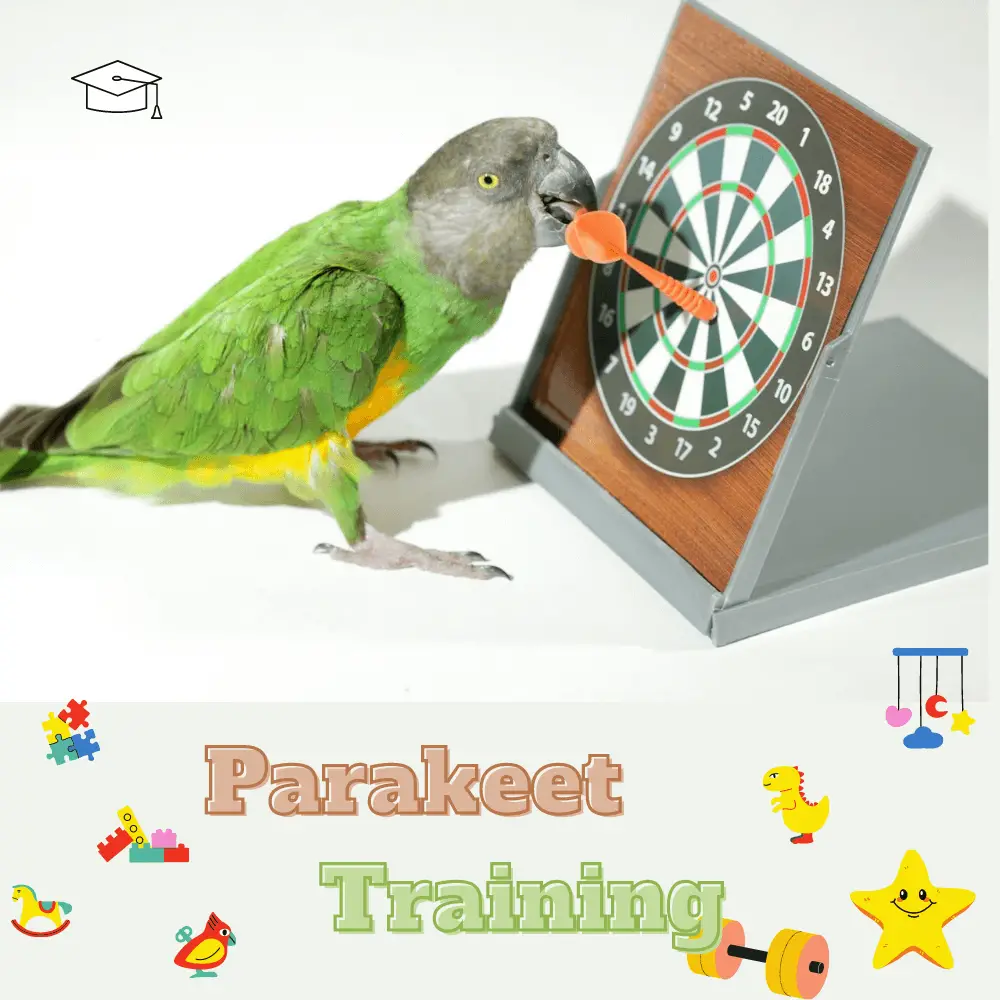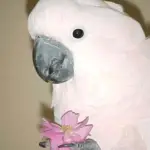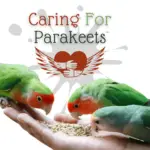
Parakeet training, Many people ( anthropomorphically ) view punishment as the easiest, most effective, and most logical treatment for behavior deemed unacceptable by their parrot.
The problem of punishment
This perception is wrong, it has long been understood that the parrot does not recognize the punishment, at least not the way we humans conceive:
1) This concept is not part of his genetic makeup ( c ‘ is organic ).
2) Punishment has the disadvantage of impoverishing the behavioral repertoire by removing an element without replacing it with another.
3) Most of the time, the parrot is argued for a fault it does not know it has committed.
4) The parrot will not relate the punishment to its own behavior, but rather will associate it with the human’s anger.
5) Punishments, in addition to having no control over the bird, will add to the insecurity and anxiety of the latter and may even increase the response that one wishes to suppress if it portends positive reinforcement.
6) Punishment often only has a temporary effect on behavior.
7) The parrot who is being punished risks connecting the punishment to a discriminative stimulus, such as the human who administers the punishment, a specific situation or event, and not generalizing the sanction to other people, situations, or events. He will try to avoid these people or refrain from responding only in these circumstances.
8) Repeated punishments can cause humans to develop a negative perception of their bird, which will result in them paying more attention to nonsense than to the good shots of their parrot.
9) Offering alternatives in a positive way is much more effective than punishing behavior.
- It would be more profitable for humans and birds to encourage and reward the desired behaviors.
- The more attention the parrot receives for its good shots, the less it will need to resort to bad ones to get it.
- The exaggerated punishments, as well as the quick “quick fix” expedients, are in no way justifiable. ( exclusion, physical corrections, covering the cage, watering, earthquake, etc. ) I tend to see them as mistreatment.
- These are abusive acts, delivered inconsistently and disproportionate to the fault committed that only serve to frighten the bird.
- They only reflect the difficulty of humans in controlling their own emotions.
Better to try to catch the bird in the act well, and as often as possible. He will then be more willing to be attentive to what is going on when he is not doing the right thing.
The parrot does not recognize the punishment, learns nothing from it and, in many cases, the simple fact of noticing bad behavior on its part reinforces this behavior !!!
On the other hand, he can understand that action brings about a reaction that risks having unpleasant developments for him, generally the withdrawal of pleasure or the lack of satisfaction of a desire.
Possible solutions

Parakeet Training
The consequence of parakeet behavior
- Adding a positive ( pleasant ) stimulus positively reinforces a behavior.
- The withdrawal of a negative ( aversive ) stimulus positively reinforces a behavior.
- No stimulus presentation weakens the behavior and makes it disappear.
- Withdrawing a positive stimulus weakens the behavior and makes it disappear.
To be effective, the “consequence” must be:
- Constant ( inadequate one day, always inadequate )
- Immediately follow the behavior.
- To be announced.
- For short time.
- Make sure you don’t reinforce bad behavior.
An example:
You play innocent battle games with your parrot with your hands, and the bird gets more and more excited because it likes to tussle with you, and naturally, it nibbles harder and harder.
1. You announce: “too loud!”
2. Withdrawal from the fun Stop the game and remove your hands. All this must be done without arguing or raising your voice; in fact, without giving him any answer.
3. Wait ( 10 seconds ), then resume play.
4. As soon as the pressure increases, you announce, stop play, wait and resume.
The consequence = is the withdrawal of the positive stimulus. It is simply a question of removing your hands and ceasing the game, which, at first glance, will surprise the parrot who will not understand immediately.
After resuming play, you announce and stop again if the beak pressure gets too strong, then start again and stop … At this point, the parrot will seek to understand and will experiment on its own by increasing and increasing.
decreasing the pressure of his beak, until he makes the relation between the two strong pressure of his beak and the stopping of the game.
Here, the parrot is learning by the trial/error method. He will offend several times before making the connection between his gesture and your reaction.
It is by the constancy of the warning and the withdrawal of the positive stimulus that he will end up making the association in his head, that he will find his error.
Subsequently, if the situation recurs, sometimes it will only be enough to call “too loud” for the bird to release its pressure. At this time, there is no reason to interrupt the game, the parrot, by his attitude, avoided punishment: he chose an alternative behavior. 🙂
Extinction

parakeet training
The extinction method is used when a bird’s behavior does not lead to any positive or negative consequences. When a behavior is not reinforced, it will eventually change or disappear.
- Extinction will take place if the bird’s response is not or no longer enhanced.
- Extinction ( not of consequence at all ) by itself will never be as effective as if used in conjunction with positive reinforcement.
We reinforce when Coco gives it a try by taking the right path to follow (even if this try is not perfect). He has changed his strategy and it is this attitude that must absolutely be reinforced.
Examples
The bird is screaming at the top of its lungs: no response is offered ( you turn your back or leave the room ).
The bird speaks softly or makes pleasant sounds: we respond immediately. ( We look at it, we come towards it, we happily repeat the pleasant sound, we congratulate. )
Here the bird will learn that if it howls, it will get absolutely nothing from you. If he speaks or makes quieter sounds, he will be able to capture your attention.
Important:
Extinction, whether partial or total, is not an instantaneous phenomenon. It will often take several rehearsals before Coco realizes that he is wasting his time and decides that it would be better to change his “modus operandi”.
By these reinforcements and these non-reinforcements, you guide your parrot towards the success of the objective. It will be normal for him to try again ( often several times ) before realizing that the avenue he insists on taking does not bring him anything at all.
Parakeet treats for training

Parakeet training
The parrot MUST ALWAYS have an alternative response possibility:
- Or stop the behavior on its own when it is about to perform it
- Either a possibility of escape, that is to say, to accomplish an alternative (good) behavior.
- In a case where the bird is frightened by something… the possibility of fleeing.
As the method advocated here is largely based on the trial and error of the parrot:
1) It is a question of offering no response following an unpleasant behavior on the part of the bird ( extinction ).
2) Better to bet on positive responses if we want our bird to explore avenues with confidence, without fear of sanction.
Socialization must give the bird a chance to assimilate good behavior ( which will be done with time and consistency ).
The parrot is an impulsive animal that lives in the instantaneity of the moment, and which consequently has great difficulty in restraining its desires or its reactions.
To do this, it is essential to develop consequence avoidance procedures with your bird rather than unsuccessfully attempting to punish it. Communicating well avoids any hassles …




















